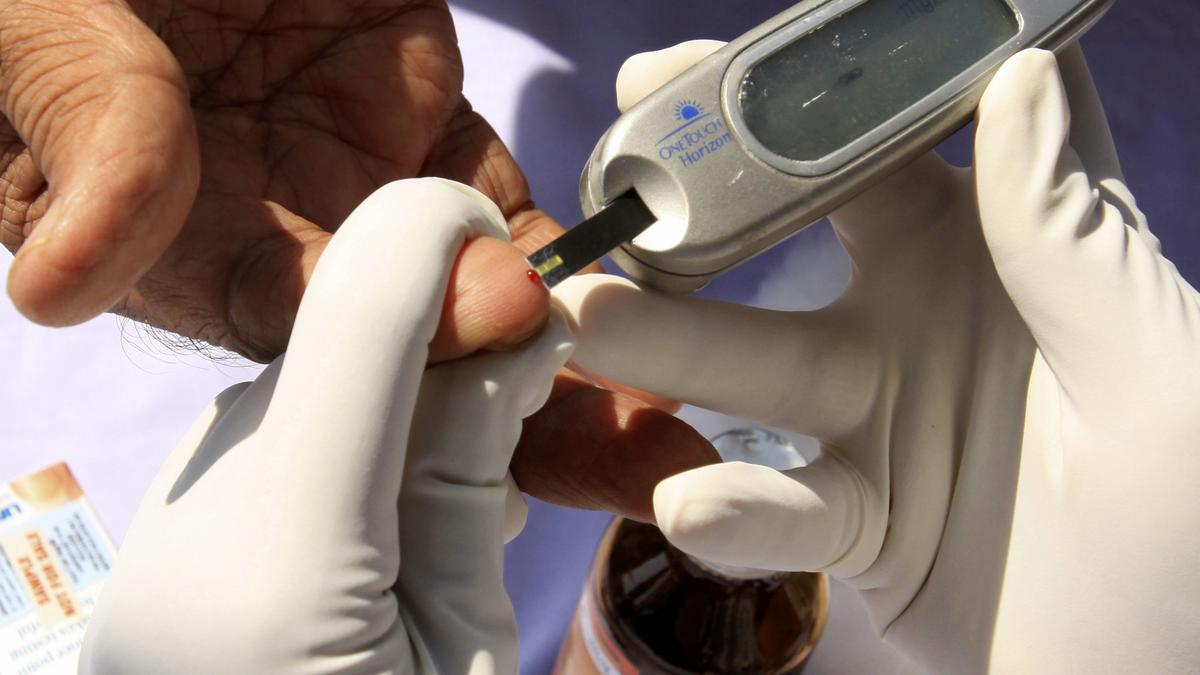
Study finds rising prevalence of type 2 diabetes in the young in south India
The Hindu
Study shows significant rise in type 2 diabetes prevalence among younger individuals in southern India due to obesity and family history.
A study has found a higher percentage increase in the prevalence of type 2 diabetes among younger individuals than in older individuals in southern India over a period of 10 years. Obesity and family history of diabetes were found to be the primary contributing factors for the rise in prevalence.
A team of doctors led by A. Ramachandran of India Diabetes Research Foundation and Dr. A. Ramachandran’s Diabetes Hospitals studied the prevalence and incidence of type 2 diabetes and its associated risk factors in younger individuals aged between 20 and 39 years and older individuals aged 40 and above over a 10-year period (2006 - 2016). They have published the findings of the study in an article — “The rising prevalence of type 2 diabetes among the youth in southern India - An ancillary analysis of the Secular Trends in Diabetes in India (STRiDE-I) study” in the Journal of Diabetes.
The analysis, according to the doctors, was done using data of two epidemiological surveys conducted in 2006 and 2016 in three regions — Chennai (city), Kancheepuram (town) and Panruti (peri-urban village). A total of 7,066 persons were enrolled for survey I and 9,848 for survey II.
“In 2006, the survey found a 9% prevalence of diabetes in the rural area. In 2016, when we went back, we found that this had increased to 13%. In Chennai, the prevalence increased from 18% to 22%. Now, we used the same analyses to look at the prevalence of diabetes between the older and younger population and found that there was a significant increase in the prevalence of diabetes in the younger group when compared to the older population in a decade’s time,” Nanditha Arun, the lead author of the study, said.
The study found that the prevalence of diabetes increased in both the age groups in a decade’s time. In terms of specifics, the authors found that the prevalence of diabetes that was a mere 4.5% in the younger population, increased to 7.8% over a period of 10 years; a 36% increase. In comparison, the prevalence rose from 28.4% to 34% in the older individuals, registering a 11% increase. The incidence of diabetes rose by 120% in younger individuals and 150% in the older group, the study said.
“Type 2 diabetes is a chronic and lifelong disorder. When diagnosed at a younger age and with a rising prevalence, it is worrisome as they will live longer with the condition and have a higher risk of complications. They will have higher exposure to the ill effects of diabetes and hyperglycemia,” Dr. Nanditha noted.
Why was there a rise in prevalence? She explained that when adjusted for family history and age, they found that waist circumference — abdominal obesity — was an independent risk factor. “We found that physical activity significantly reduced among the entire study population, while dietary habits also worsened with increased fat consumption and higher calorie intake. While family history and age are non-modifiable risk factors, adopting a healthy lifestyle, improving dietary habits and physical activity could help younger individuals in managing modifiable risk factors such as abdominal obesity,” she added.

In a breathtaking display of musical prowess, the Singspirations, a Tiruchi-based choir group, in collaboration with the Glauben Ensemble and the Genesis Chamber Orchestra, presented a sublime performance of Wolfgang Amadeus Mozart’s Requiem in D minor, K. 626, in its entirety, mesmerising audiences.












